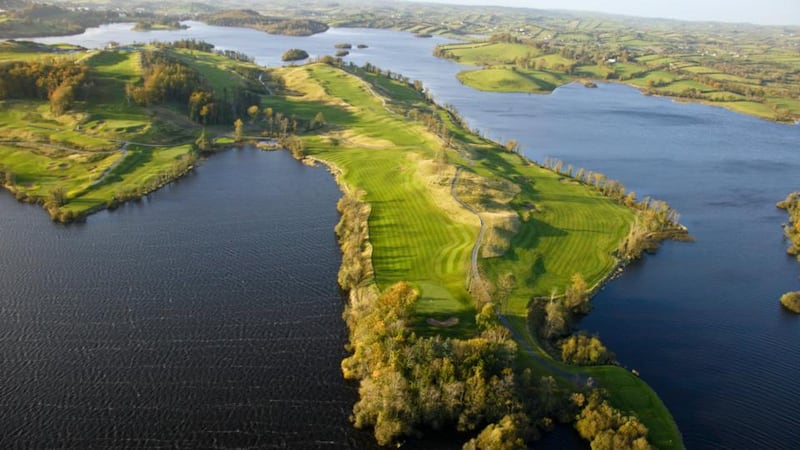The new Monaghan Tourism website does not exaggerate when it describes the local landscape as "unspoiled". The county of the little hills is indeed one of Ireland's better-kept secrets, its visitor numbers so modest they sometimes get lumped in with those of neighbouring Louth. And in a noisy marketplace, Monaghan has been reluctant to shout about itself much until now. But that may be changing.
Monaghan’s disadvantages as a tourist power are obvious. To start with, it’s one of Ireland’s smallest, least populated counties. It’s also one of the few that has neither a coastline nor contact with the river Shannon. Partition turned it into a near-island, cut off from its hinterland on three sides. The political complications are still highlighted by a stretch of road near Clones where drivers have to cross the Border four times in seven miles en route to Cavan.
And yet Monaghan has more than its share of visitor attractions. They range from Patrick Kavanagh Country in the south (immortalised in such poems as Epic and Shancoduff) to the famous Castle Leslie in the north, where the gloriously eccentric hosts have been housing celebrity guests for centuries.

Jonathan Swift, Winston Churchill and Mick Jagger are only a few of the better-known. There are so many others that the castle’s bedrooms all have their own histories.
In between Inniskeen and Glaslough, meanwhile, there's "the Killarney of the north", as Castleblayney's Lough Muckno park has been called. It may lack the backdrop of the McGillycuddy Reeks, but as long ago as 1837, Lewis's Topographical Dictionary of Ireland raved about its "demesne of great extent and beauty". And on its lake these days, unlike then, you can water-ski or wake-board, among other high- octane entertainments.
Muckno is one of well over 100 lakes in Monaghan, a fact not so secret to foreign anglers who have long sought them out in search of trout, pike, perch, bream and rudd.
In fact, when Jack Charlton’s Republic of Ireland team needed a rural retreat during preparations for the 1994 World Cup, they holed up in the Nuremore Hotel, near Carrickmacross, which boasted easy access to fishing and golf: both were crucial to the well-being of manager and team.
Lakes and drumlins apart, Monaghan has also carved out some highly distinctive niches for itself. Consider the contrast between the Tyrone Guthrie Centre at Annaghmakerrig, where a generation of artists have gone for inspiration, and the National Rallying School at Scotstown, where petrol-heads flock to perfect their handbrake turns in mark-one Ford Escorts and the like. The two venues are simultaneously about 10 miles, and a world, apart.
Then there are the festivals. Although the county was once best known known for country and western music, with Castleblayney as a miniature Nashville and “Big” Tom McBride as the local Waylon Jennings, it also now has the long-established Harvest Blues Festival, in which Monaghan town meets Mississippi for a weekend every September.
For several years until 2011, thanks to the Pat McCabe-inspired Flatlake Festival, Monaghan hosted the country’s quirkiest arts event. Set in the grounds of Hilton Park, near Clones, Flatlake featured such highlights as a short but unforgettable mash-up between Lily Allen and Crystal Swing. Alas, Flatlake is now on a possibly permanent sabbatical, though fans have not given up hope of its return.
To pull together the threads of all these disparate charms, earlier this summer Monaghan hired a travel PR specialist, the impeccably-named Jill Guest, to accompany the website launch. London-born, Guest has a Catleblayney mother. As such, she shares an ancestral heritage with the likes of James Connolly (who was born in Edinburgh, but when filling out census forms listed Monaghan as his birthplace) and Paul McCartney.
This is an ever-more important tourism market as well.McCartney went back to his maternal roots (well, near them) when he married Heather Mills in Glaslough in 2002. The wedding, at least, was a great success; Monaghan can hardly be blamed for the divorce.
Since then the county’s connections with rock royalty have expanded dramatically. Earlier this year, retracing his roots for a US TV programme, Sting paid a poignant visit to the old Carrickmacross Workhouse, now refurbished as a community and heritage centre, where one of his maternal ancestors spent her last days.
But getting back to the person for whom Monaghan is perhaps best known, Patrick Kavanagh is a good example of how locals are shedding their reserve in the art of self-promotion. Kavanagh used to be remembered mainly by a festival at the end of November: his anniversary, but not a good time to attract visitors.
Now the annual weekend is held in tourist-friendly September, and is only one of several Kavanagh-themed events hosted throughout the year by his native village. The latest addition is inspired by one of his best-loved poems, Inniskeen Road July Evening. The name was almost made for a tourism event, apart from the short time- frame it implied.
Happily, this last deficiency has been overcome. So not only has the poem title spawned an annual festival, but when its third instalment happens this summer, Inniskeen Road July Evening will, as is now usual, last for three days.
The Monaghan Tourism website is at monaghantourism.com. Full information about events at the Patrick Kavanagh Centre is at patrickkavanaghcountry.com.










